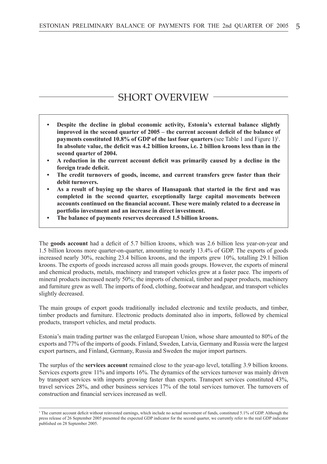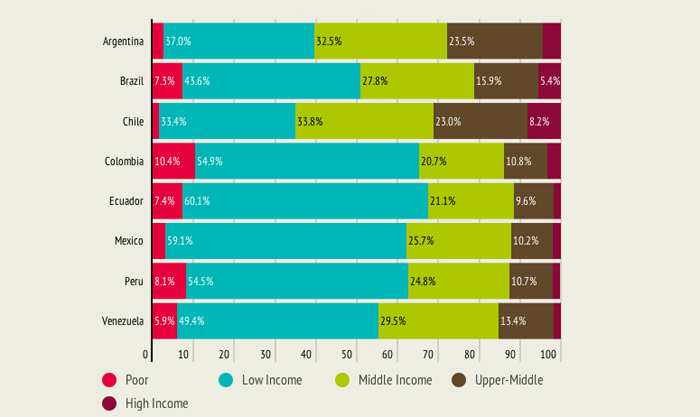Contents
To calculate the debt ratio, we take total liabilities divided by total assets. If a company has a high debt ratio, usually greater than 40%, they are considered highly leveraged. A high degree of operating leverage magnifies the effect of a small change in sales volume on EBIT. Leverage is the use of borrowed capital to fund an investment or project. As a result, the potential returns from a project are multiplied. Simultaneously, leverage multiplies the potential downside risk if the investment does not pan out.

If gross sales accelerate, its fixed costs weigh less on its working margin which should rise greater than for a corporation with variable prices. On the opposite hand, when sales shrink, a excessive working leverage may drag on an organization’s profits. The high leverage involved in relying on sales to repay fastened costs can put firms and their shareholders at risk. High working leverage throughout a downturn may be an Achilles heel, placing strain on revenue margins and making a contraction in earnings unavoidable. Indeed, companies such as Inktomi, with excessive operating leverage, typically have larger volatility in their working earnings and share costs.
However, at the time of a recession, high operating leverage is risky. The degree of operating leverage is a multiple that measures how much the operating income of a company will change in response to a change in sales. Companies with a large proportion of fixed costs to variable costs have higher levels of operating leverage. Specifically, the ratio of mounted and variable costs that an organization uses determines the quantity of working leverage employed. A firm with a higher ratio of mounted to variable costs is said to be utilizing extra operating leverage.
A firm’s DFL represents the riskiness of its capital construction, which incorporates its debts and equity. When an organization’s fixed monetary costs account for a large proportion of its earnings, its DFL will be excessive. difference between financial and operating leverage So, once the corporate has bought enough copies to cowl its fixed prices, each additional greenback of sales income drops into the bottom line. In other phrases, Microsoft possesses remarkably high operating leverage.
In distinction, working incomeis an organization’s revenue after subtractingoperating expenses, which are the costs of operating the every day enterprise. Operating earnings helps buyers separate out the earnings for the corporate’s operating performance by excluding interest and taxes. The degree of working leverage is a measure used to https://1investing.in/ evaluate how a company’s operating earnings modifications after a share change in its gross sales. One can calculate the equity multiplier by dividing a agency’s complete belongings by its total equity. Once figured, one multiplies the financial leverage with the total asset turnover and the revenue margin to supply the return on equity.
What is Leverage?
Financial leverage measures the percentage of change in taxable income to the percentage change in EBIT. Operating leverage defines the overall position of the fixed operating cost. Leverage is the ratio applied to the margin amount to determine how large trade will be placed. Understanding margin and leverage, as well as the distinction between the two, can be difficult at times. This is also why many first-time investors are advised to avoid using leverage until they have gained sufficient experience to avoid such a significant loss to their business. As with any other financial instrument, leverage has advantages and disadvantages that you should be aware of before employing it in your business or personal investments.
Is considered better, as it permits businesses to generate huge profits on each incremental sale. However, companies that have low DOLs can lower their fixed expenses. If a firm has too many costs, which they can’t change, they can run their business with high leverage. Leveraged loans and bonds have higher interest rates to compensate investors for a higher risk involved.

Leverage multiplies the power of the money that has been put on the investment. If used efficiently, Leverage can significantly increase the returns on investment as opposed to without Leverage. The company ABC Ltd has total equity of Rs 300 and a debt of Rs 200, which makes it total assets worth Rs 500. Financial leverage measures the percentage of change in taxable income to the percentage change in EBI T. Operating leverage describes the over all position of the fixed operating cost. Trading on equity is not possible while the company is operating leverage.
How a enterprise makes gross sales can also be a consider how much leverage it employs. On the opposite hand, a firm with a high quantity of sales and decrease margins are much less leveraged. Companies with higher DFLs often have larger fixed financial prices than firms with decrease DFLs. Companies with low DFLs can reduce their losses when gross sales are low because most of their expenses are variable and rely upon the quantity of gross sales they make.
Advantages and Disadvantages of Leverage
With operating leverage, an organization’s minor change in sales can set off a boost in operating income, as bills are mounted and won’t probably rise with sales. The greater the proportion of fixed operating costs and financial charges, the greater the degree of combined leverage. The value of combined leverage, like the other two leverages, must be greater than one. Operating leverage is concerned with the firm’s investment activities.
- In monetary administration, leverage just isn’t a lot different, it means change in one element, results in change in revenue.
- Financial leverage is vital devices which is used to measure the fixed cost proportion with the total capital of the company.
- Is quite excited in particular about touring Durham Castle and Cathedral.
This is because corporations with low DFLs pay extra variable prices, which continue to extend as sale volume increases, whereas firms with high DFLs don’t. At the identical time, an organization’s costs, product combine and value of inventory and uncooked supplies are all topic to vary. Without a good understanding of the corporate’s inside workings, it’s difficult to get a really correct measure of the DOL. The diploma of working leverage may also be calculated by subtracting the variable costs of gross sales and dividing that number by gross sales minus variable costs and fixed costs.
What is the degree of operating leverage formula?
Operating Leverage influences Sales and EBIT but Financial Leverage affects EBIT and EPS. If the firm acquires fixed cost funds at a higher cost, then the earnings from those assets, the earning per share and return on equity capital will decrease. If the firm obtains fixed cost funds at a higher cost, then the earnings from those assets, the earning per share and return on equity capital will decrease. The Degree of Operating Leverage Ratio helps a company in understanding the effects of operating leverage on the company’s probable earnings. A company’s balance Degree of Operating Leverage can provide the financial leverage is an important factor contributing to business profits. When the agency has fixed prices, the percentage change in income because of changes in sales quantity is greater than the percentage change in gross sales.
When autocomplete results are available use up and down arrows to review and enter to select. It has a responsive doubt solving team which solves & provides good solutions for your queries within 24 hours. Eduncle Mentorship Services guides you step by step regarding your syllabus, books to be used to study a subject, weightage, important stuff, etc. Time management is very much important in IIT JAM. The eduncle test series for IIT JAM Mathematical Statistics helped me a lot in this portion. Financial leverage will change due to tax rate and interest rate.

This is because the cost of debt is between 8 and 15%, whereas the rate of profits in the case of a growing company can range from 20% to 100%. As a result, as long as the company is growing, leverage tends to magnify the company’s profits. Another advantage of leverage is that in the case of a growing company that requires cash for its operations, the use of debt can result in a multiplication of profits for the company. Because leverage is a multifaceted financial tool, it is somewhat complex in nature and can increase both gains and losses when used by a business or an individual investor. Understanding its benefits and drawbacks will help you expand your business and determine whether your company is ready to use this financial tool just yet. Because current assets are less profitable than fixed assets, this is the case.
A company with excessive operating leverage has a big proportion of fastened prices, which implies that a giant increase in sales can lead to outsized modifications in earnings. The higher the diploma of working leverage , the extra delicate an organization’s earnings before curiosity and taxes are to changes in sales, assuming all different variables remain constant. The DOL ratio helps analysts decide what the influence of any change in sales will be on the corporate’s earnings. There are a few formulation you can use to calculate a company’s diploma of working leverage.
Example of Leverage: Operational and Financial
Operating leverage is the results of totally different combinations of fastened prices and variable prices. Financial leverage is primarily related to a firm’s capital structure’s mix of debt and equity. The presence of fixed financial charges in the firm’s income stream causes financial leverage.
The total costs incurred are Rs 914, out which fixed cost is Rs 814, and the variable cost is Rs 100. It magnifies the adjustments in monetary variables like sales, costs, EBIT, EBT, EPS, and so forth. The calculation of operating leverage is important, and it will help determine the right price point for covering your expenses and earning profits. Additionally, it will help you understand how your business can use fixed-cost assets, including equipment or warehouses, for profit. In essence, if you can make more profit from fixed assets, you’ll be able to improve the operating leverage. In conclusion, leverages are a strong source of increasing returns on investments and acquiring assets for investors and companies.
As production rises, managers are in effect spreading fixed costs across a greater number of units, so the additional units have a lower ratio of fixed costs to total costs. When demand for company product increases, then experts can easily ramp up production by increasing variable costs; Company’s fixed assets allow to magnify production. Managers can increase production as long as their higher variable costs do not cause total costs to exceed their sales revenues.
Operational Leverage
High operating leverage is caused by a higher proportion of fixed costs in a firm’s total cost structure, resulting in a low margin of safety. The more fixed operating expenses there are in the cost structure, the greater the degree of operating leverage. The DOL is defined as the percentage change in earnings before interest and taxes relative to a given percentage change in sales and output. A company uses Leverage to finance its assets instead of issuing stock to raise capital.
On the one hand, it reduces your cost of capital and enhances your returns on the business. The basic analysis uses the degree of operating Leverage, which is a measure that indicates the change in a company’s operating income with respect to its change in sales. Companies, which have a large proportion of fixed costs as compared to their variable costs, have a higher level of operating Leverage. Consider, as an example, fastened and variable costs, which are important inputs for understanding operating leverage. It can be shocking if firms didn’t have this type of info on price structure, but companies usually are not required to reveal such information in revealed accounts.
